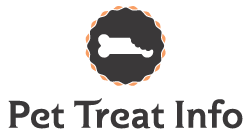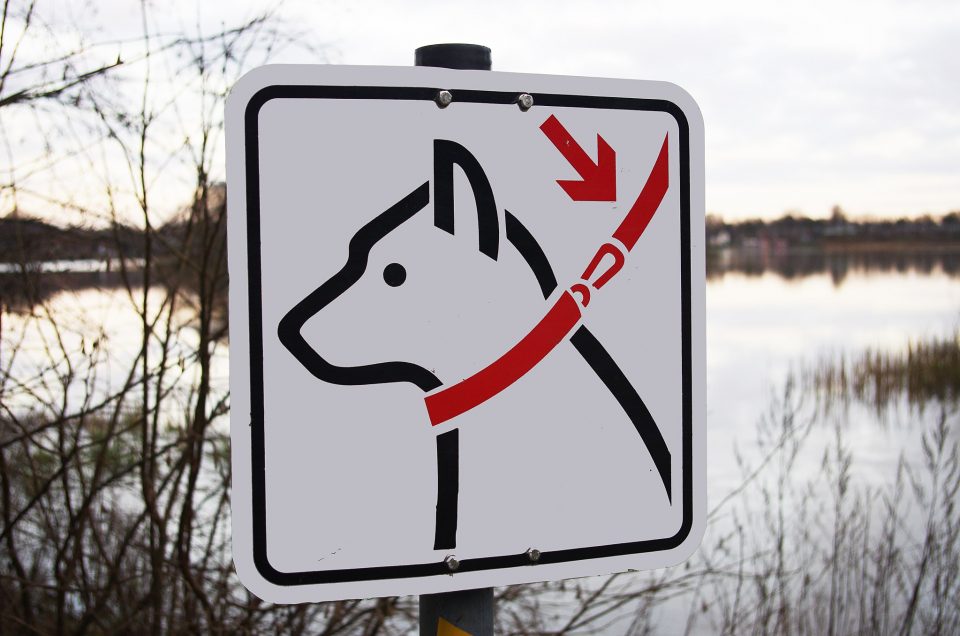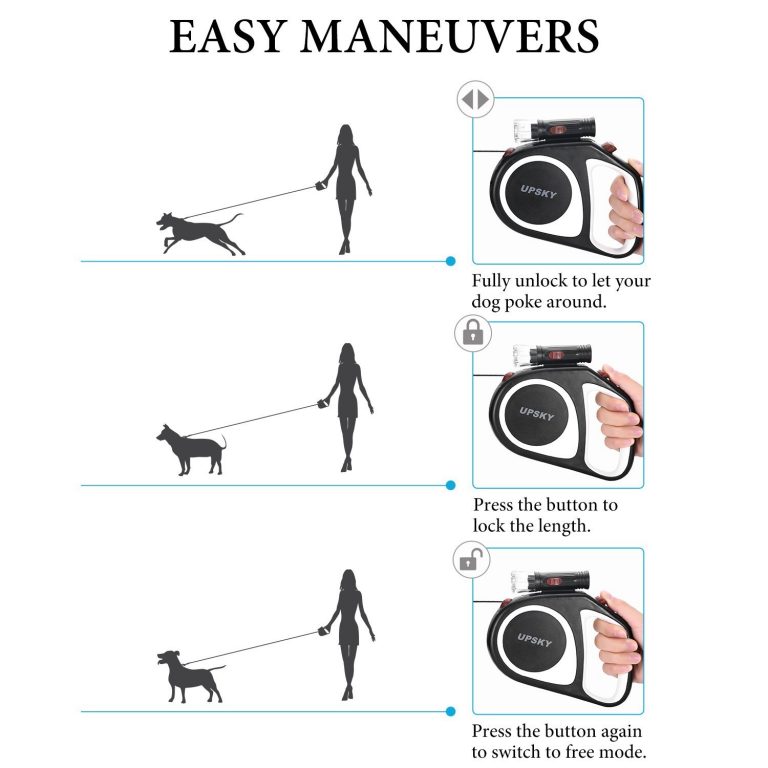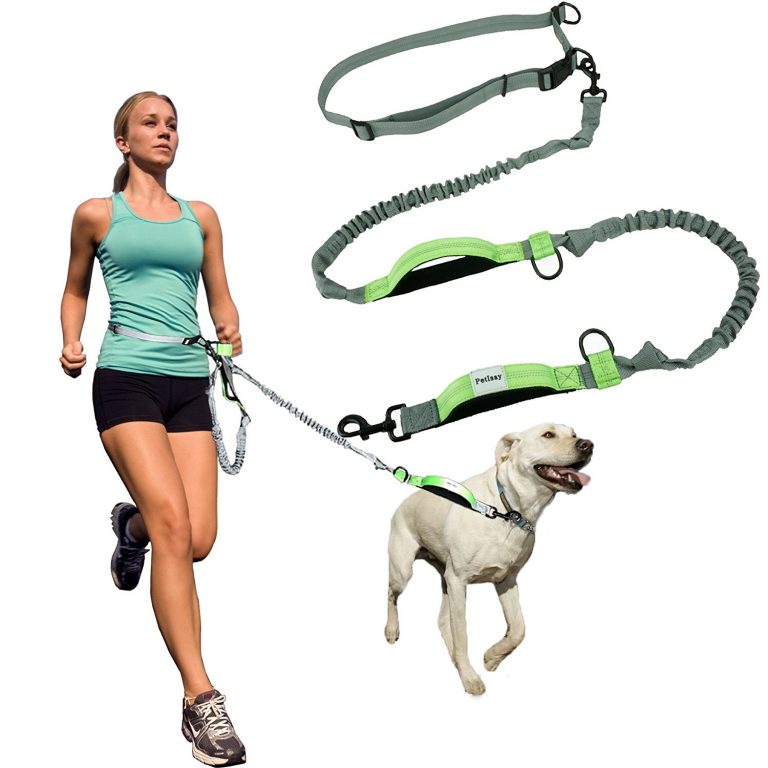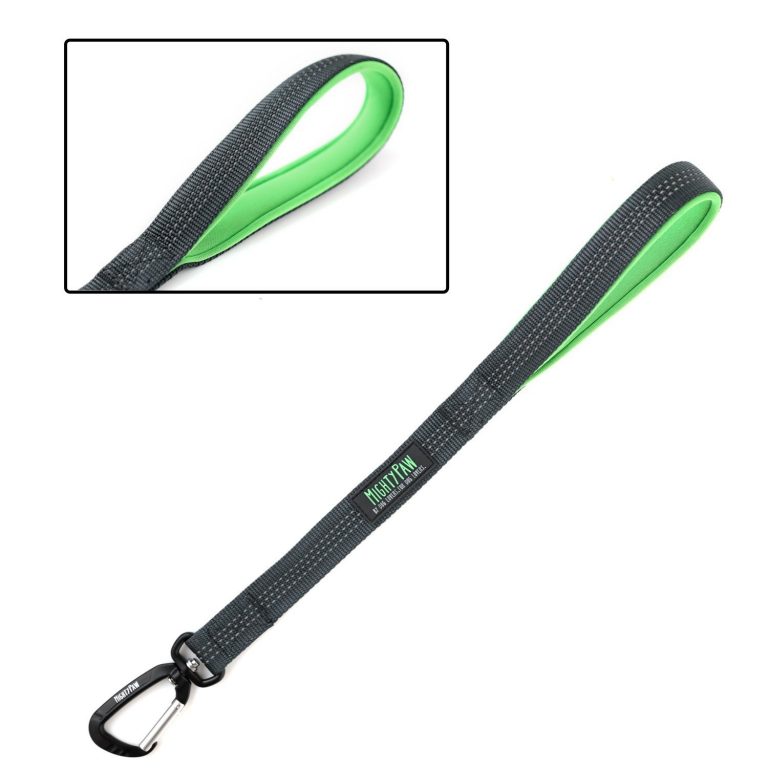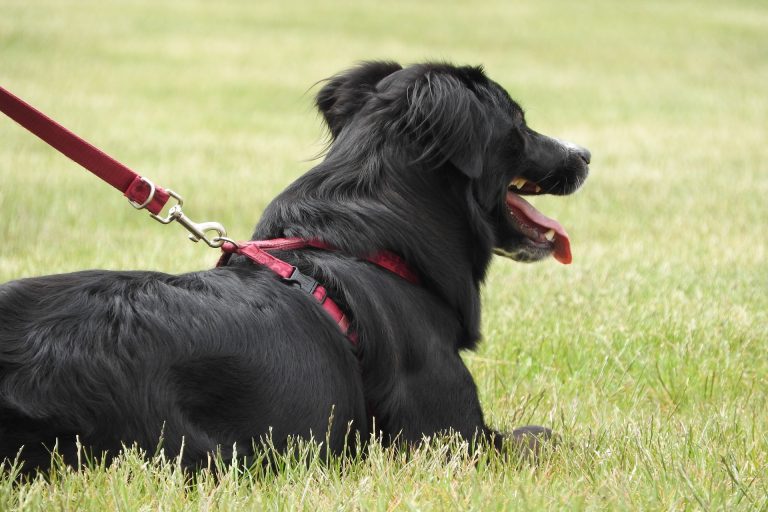Visited the pet store recently? Then you know that the simple dog leash now has an entire aisle. What’s the best dog leash? Who can tell? There are pet collars and harnesses of every description. You’ll find leashes, safety harnesses, and dog training collars. In addition, there is different equipment for big dogs and small ones. And all of them seem to come in a dizzying array of colors, thicknesses, lengths, and materials. Which one is right for your dog? Our handy guide can help you decide.
The Best Dog Leash is Fit for Your Purpose
First, it’s important to realize that there are different leashes for different needs. Will you be working on training? Is your dog a large breed, who acts like he’s pulling a sled every time you open the front door? Or perhaps you have a perfectly behaved pooch that doesn’t need much correction. The first step toward finding the best dog leash is to figure out what your needs are and go from there.
Retractable
Image via Amazon.com
A retractable leash comes with a hand unit that holds the excess rope in a neat roll. When your dog wants to wander ahead, you can press a button on the unit to allow your dog more freedom. You can also use the unit to retract excess leash length when your pet comes back to you.
This is a good choice if your dog has good recall — that is, if they listen, obey, and return to you immediately when you call them. On the other hand, if your dog likes to bolt off after birds and squirrels impulsively, this might not be the leash for you. Likewise, if they treat every walk like practice for the Iditarod, then this may not be the best dog leash for you. Finally, the delicate locking, braking, and recall mechanisms on retractable leashes make this a better choice for small dogs than for large, powerful ones.
Hands-free
Image: screenshot, by Petlsay, via Amazon.com
A hands-free leash is useful for those situations when, you guessed it, you need your hands-free. If you’re pushing a stroller, carrying groceries, then a hands-free leash may be the best dog leash for you. However, we wouldn’t recommend it for dogs that aren’t well trained on a regular leash. First, you will have less direct control over your dog with a hands-free leash. Second, if you do need to correct your doggo, it will take you longer to do it. In addition, many hands-free leashes secure around your waist. If your dog bolts or lunges, this could pull you off balance or injure you in other ways.
Traffic leash
Image: screenshot, by Mighty Paw, via Amazon.com.
The traffic leash is not much more than a large handle with a clip on the end. This is a good option for dogs that need a bit more control than most. Some people use a traffic leash in conjunction with a different kind of leash. In this way, you can allow your dog freedom when it’s safe, and have instant, firm control when you need it. This can be the best dog leash for people whose dogs may be prone to impulsive or unpredictable behavior.
Leather dog leash vs. mesh dog leash
What’s the best dog leash material? It comes down to your personal taste. Some trainers recommend a leather lead because it will do less damage to your hands than a nylon one if your dog suddenly pulls. In addition, a leather lead won’t knot or tangle as quickly as a canvas or mesh one.
On the other hand, dogs are less likely to chew on a nylon mesh lead. And if they do chew on it, they’re less likely to destroy it. And nylon leads come in a variety of fun colors and patterns.
Pet Collars and Harnesses
Image: CC0, by Maky_Orel, via Pixabay
Collars vs. harnesses
Collars are the usual choice for everyday walking. There are a variety of training collars, as well as the traditional kind of collar that buckles. Some people prefer a collar to a harness for long-haired dogs, as there’s less chance that a collar will become tangled in your dog’s hair. In addition, if you’re looking for something for all-day wear, a collar is often more comfortable than a harness.
Some people prefer harnesses for various reasons. First, a harness may be a better choice for a small or toy breed dog, as it decreases the chance of a neck injury. Also, a harness is a better choice for dogs like pugs or French bulldogs, whose anatomy makes them prone to breathing problems. The jury is still out, though, about whether a harness or a collar is better for dogs that pull on the leash. Some say that a harness discourages pulling. Others believe that a harness puts a dog in a “sled dog” mentality, which can make pulling worse.
The best dog harness
There are a number of different kinds of harnesses. Some have a clasp in front, and some have the clasp in the rear. There are harnesses made from different materials: leather, synthetic webbing, canvas, and even memory foam. The best dog harness is the one that fits your needs the best. Do you need something tough wearing? Or would something delicate and decorative suit your pooch? Does your dog have a skin, muscle, or joint condition that would benefit from soft materials? Are you trying to train your dog not to pull? Because there are harnesses for that, too. Make sure to look for something made for your dog’s breed and weight class. Try it on before you buy it if you can. Make sure it’s easy to get on and off, and that it doesn’t irritate or chafe.
Dog training collars and training leashes
Slip leash
You may have seen a slip leash at your vet’s office. Basically, it’s a leash with a loop at the end, which tightens and loosens as needed. There are a couple of different philosophies about using a slip leash. Cesar Millan recommends this kind of leash for a dog that needs quick, sharp corrections during walks. By contrast, Retrieving for All Occasions believes that you should never use a slip leash on a dog, unless that dog is used to walking on a loose leash, and doesn’t pull or lunge. Either way, it’s important to be careful, and never to pull or choke your dog with the leash, as it would be easy to injure them that way.
Here’s a short video that explains one way to train a dog using a slip leash.
Long lead
A long lead is the best dog leash for recall training, that is teaching your dog to come when you call. A long lead is usually 20 feet long or more. Using it, you can teach your dog basic recall skills, as well as how to walk safely off leash. It is not generally practical for everyday walking.
Here’s a video that demonstrates how to teach a dog recall using a long lead.
Gentle leader
The Gentle Leader is a head harness. The philosophy is that by controlling your dog’s head, you can curb pulling by putting gentle pressure on the dog’s muzzle. It is an alternative to other kinds of training collars, as it doesn’t choke, poke or restrict. You can learn more about it at their website.
This video shows how it works.
Choke and prong collars
A choke collar works to correct behaviors by tightening around your dog’s neck. A prong collar does the same thing, with the addition of blunt prongs that press into the skin. People have different, and strong opinions about the use of these types of dog training collars. Some find them effective, while others criticize the potential for injury or abuse.
Thunder leash
A thunder Leash is a training tool for dogs that pull. It’s a regular, classic dog leash with one addition: a clip that attaches to the collar, and allows you to loop the leash around your dog’s torso. Instead of choking or poking, the loop gently tightens around your dog’s torso, giving your dog harness-like feedback when he or she pulls. If your dog pulls, this may be the best leash for you.
So, What’s the Best Dog Leash?
The best dog leash is the one that meets your needs as an owner and protects your pet from injury. Whatever you choose, it should fit well, and be appropriate for your dog’s size, breed, and special needs.
Featured Image: CC 3.0, by N-Lange.de, via Wikimedia Commons
